Assorted London Pictures





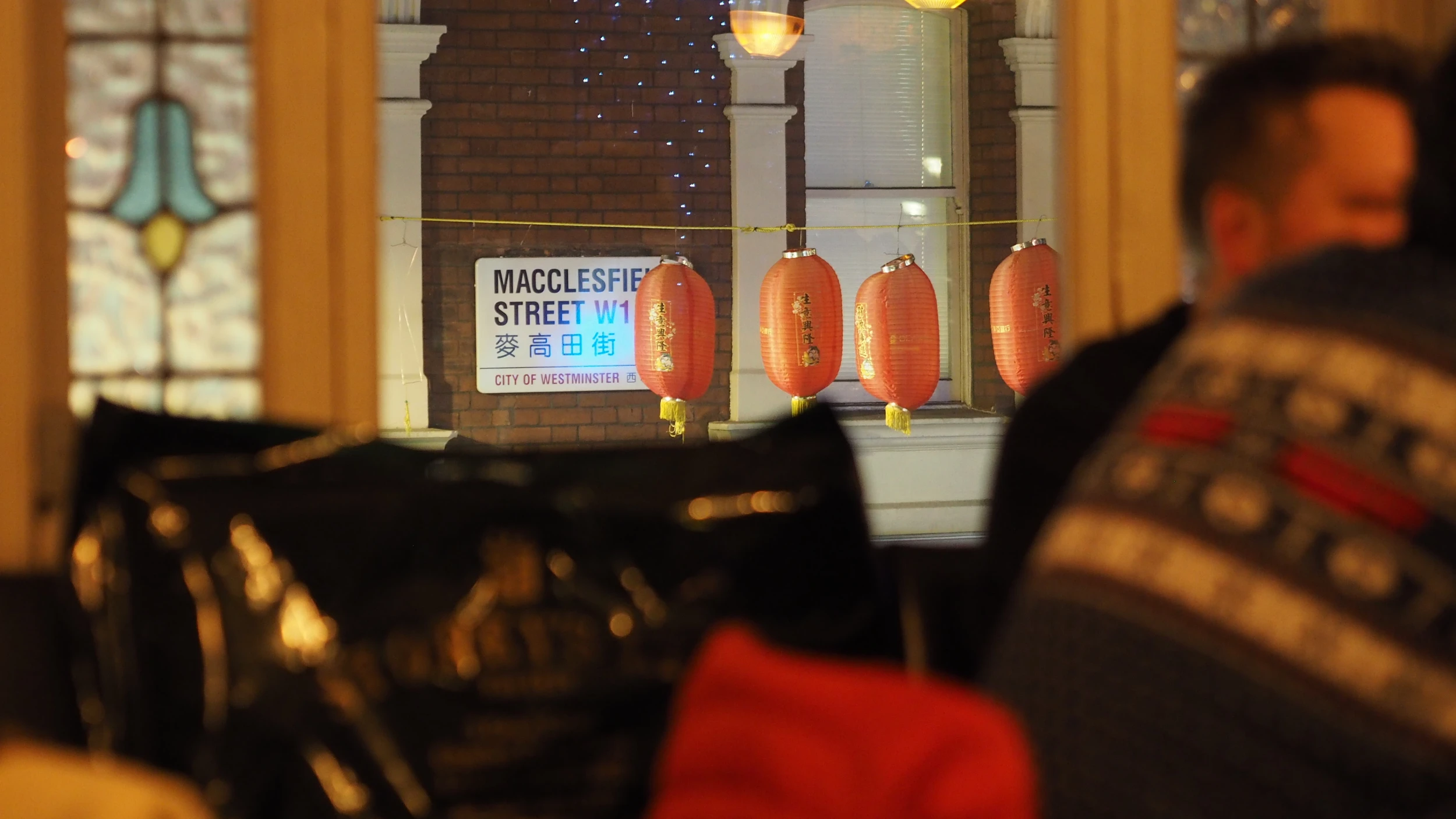
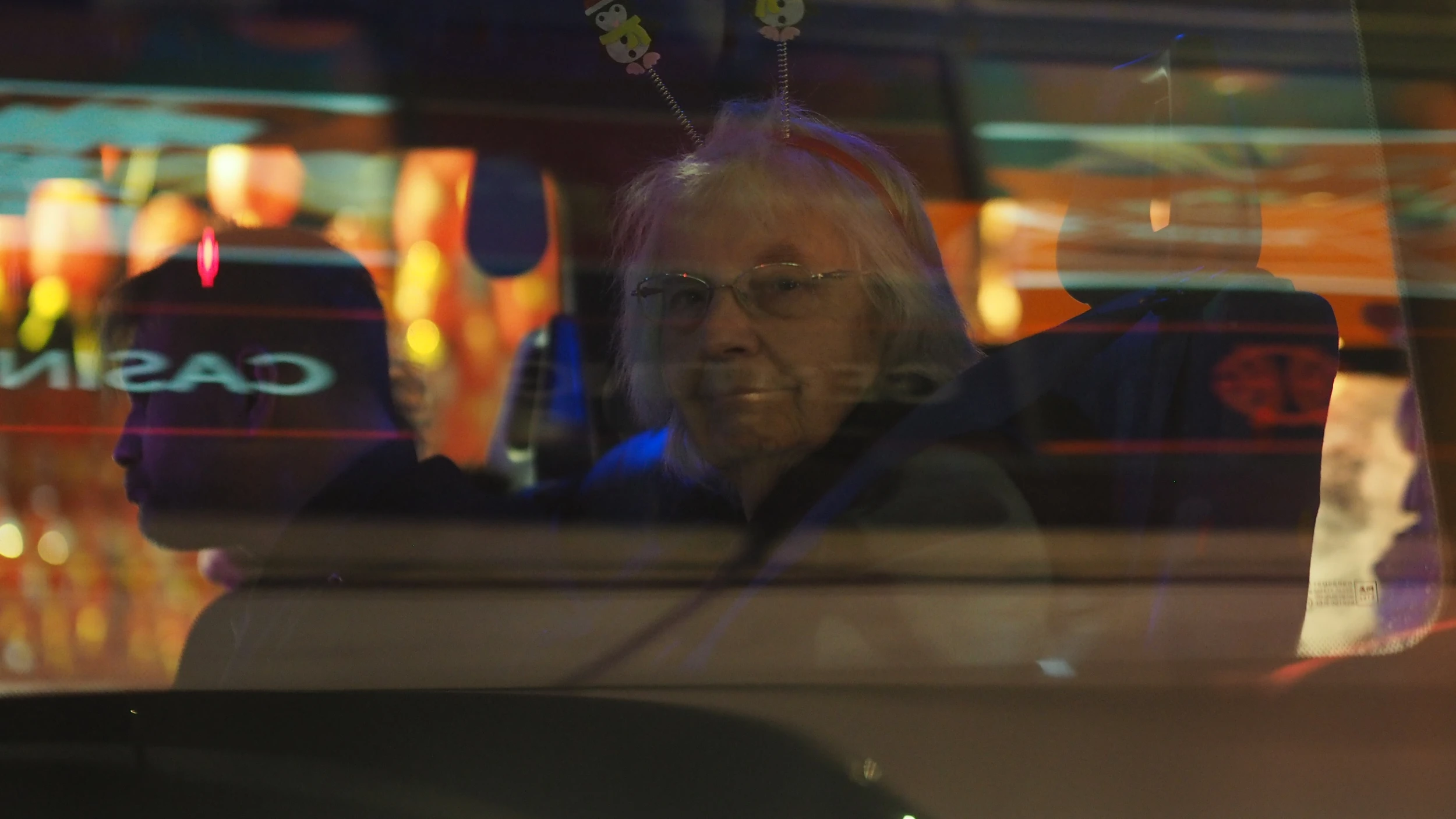







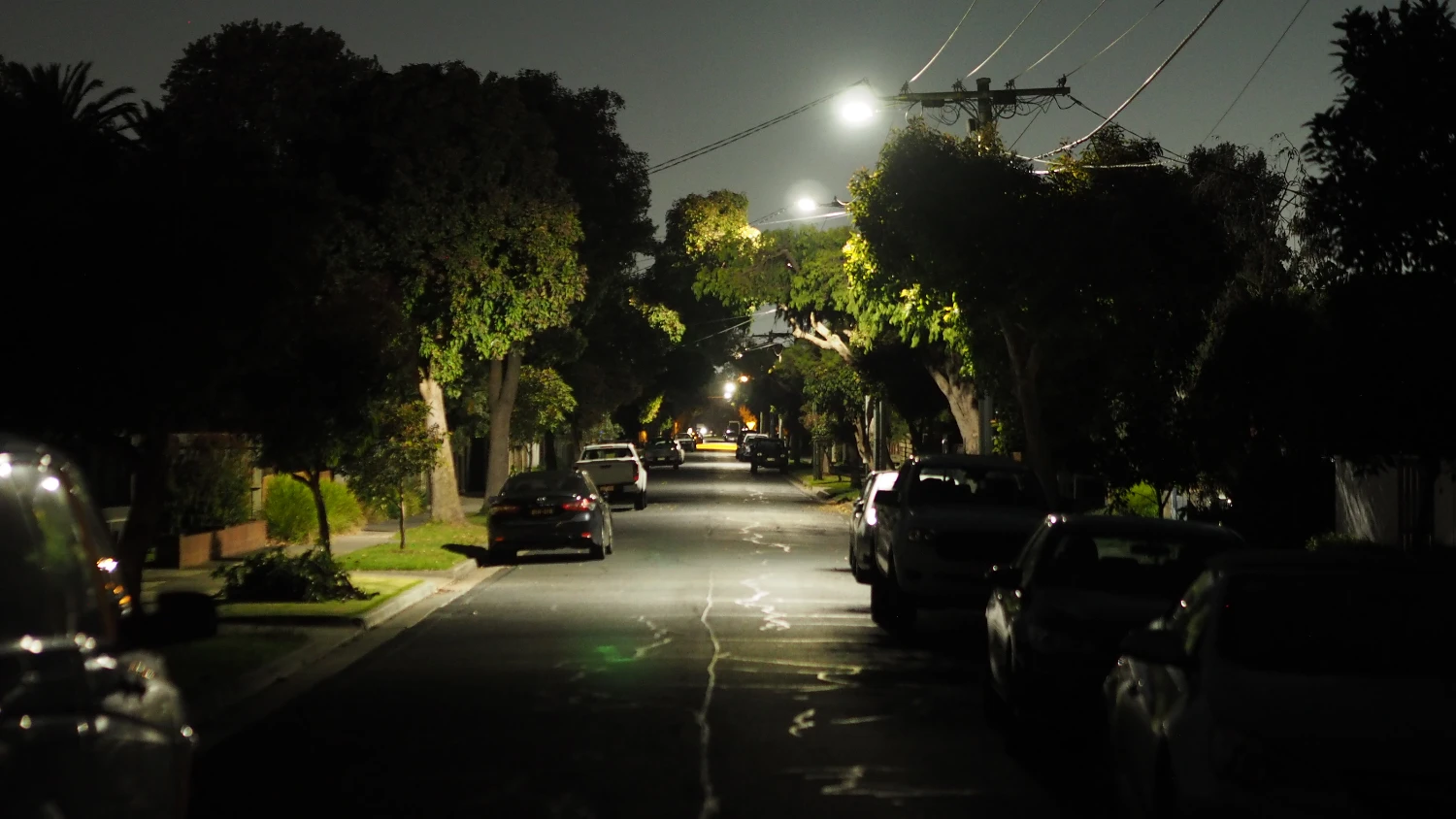
— For anyone maintaining a blog, remember you’re not writing for The New Yorker:
A post doesn’t have to have a destination, a point. You can bundle or concatenate several different topics, push into adjacency things that don’t obviously or naturally belong together - like oddments inside a Cornell box. You can start somewhere and end up somewhere completely different, without any obligation to tie things up neatly. Unlike most paid journalism, you are unshackled from release schedules or topicality - able to address anything, from anywhere, and anywhen. Lovely too the way you can illustrate with videos and images (always the danger of getting a bit carried away there) while linking to related writings by others or the texts that spurred your essay into existence (again, tempting to overdo).
— In Stop Talking to Each Other and Start Buying Things, Catherynne M. Valente describes how online communities die:
These sites exist because of what we do there. But at any moment they can be sold out from under us, to no benefit or profit to the workers—yes, workers, goddammit—who built it into something other than a dot com address and a dusty login screen, yet to the great benefit and profit of those who, more often than not, use the money to make it more difficult for people to connect to and accept each other positively in the future.
We keep losing online communities because they are funded by venture capital. As soon as these companies reach the end of their runway or the investors want some of their money back, their platforms usually deteriorate into a hell hole of attention-grabbing, algorithmically-optimised hot takes, advertising and abuse. It’s the same cycle every time.
And yet, people flock to every new VC-funded website, providing us with a text box to share stuff. Valente, after experiencing a thirty-year rinse and repeat of rising and declining online platforms, writes on Substack. How is Substack different from Facebook, Twitter, Tumblr, MySpace or LiveJournal? No one can predict which direction Substack is going in the future, but its owners and investors certainly don’t care about the people and communities they host. Their goal is to become profitable or to find a profitable exit.
Building good technology is hard. It takes time and money. Successful online platforms operate at a scale that is not viable as a hobby. We can only sustain online communities by paying to use the platforms. But even if there was one, funded by the community, free of advertising and algorithms, how long would that last? People’s interests change, their lives change, they spend less time online, they spend more time online elsewhere. Mastodon, at the moment, looks like it’s on the right track. They rejected VC funding to keep the not-for-profit status, and the project receives enough donations so their maintainer earns a salary. But how much of people’s current drive to fund alternative social media platforms is down to Musk’s shenanigans at Twitter?
The only certain, long-term approach to secure an online community’s existence is to build the technology yourself or use open-source software and run the service on machines you maintain yourself.
— What do you want from the internet? “welcome to your first Internet Death”
all of these things — perils of relying on a single place on the internet that has no personal interest in your success — have been obvious for quite some time. You’re allowed to be mad at having to face these issues now, but I also think it’s worth asking the question: Why didn’t you prepare for this? Why is the supposed end of Twitter, regardless of the reason, such a crisis?
— Pelé, one of the greatest footballers to ever play the game, has died aged 82.
He had become such a hero that, in 1961, to ward off European teams eager to buy his contract rights, the Brazilian government passed a resolution declaring him a nonexportable national treasure.
Imagine Messi or Ronaldo being forced to spend the prime of their career in the far inferior Argentinian or Portuguese football leagues. Would they be as good and as popular as they are today?
— An unimpressive film. I fiddled way too much with my phone while watching.
Manhattan Night (2016). Director: Brian DeCubellis. Cast: Adrien Brody, Yvonne Strahowski, Campbell Scott.
In a lovely animated short film, five life-long friends recount life in Brooklyn in the 1970s. (via Waxy.org)
— Similar to my Stylesheet for a Calmer Twitter, Nick Herr explores user stylesheets for a calmer browsing experience. It’s a shame only a few browsers support user stylesheets natively. Obviously, Google wants their login forms plastered all over, disrupting our browsing experience as much as possible.
— Journalists don’t understand Mastodon. I’m glad we’re discussing another variation of “media people don’t understand blogs.” I can’t wait for “Tooting isn’t tweeting” and “Can Mastodon users also be journalists?”
— Beigel Bake on Brick Lane is an institution. During the day, you’ll meet office workers and tourists looking for their lunch. In the evenings, it’s boozed-up pub crawlers curbing their hangovers and peckish cab drivers at night or hip youth that just fell out of the nearest club. If you’re looking for a sample of Londoners, look no further than Beigel Bake.
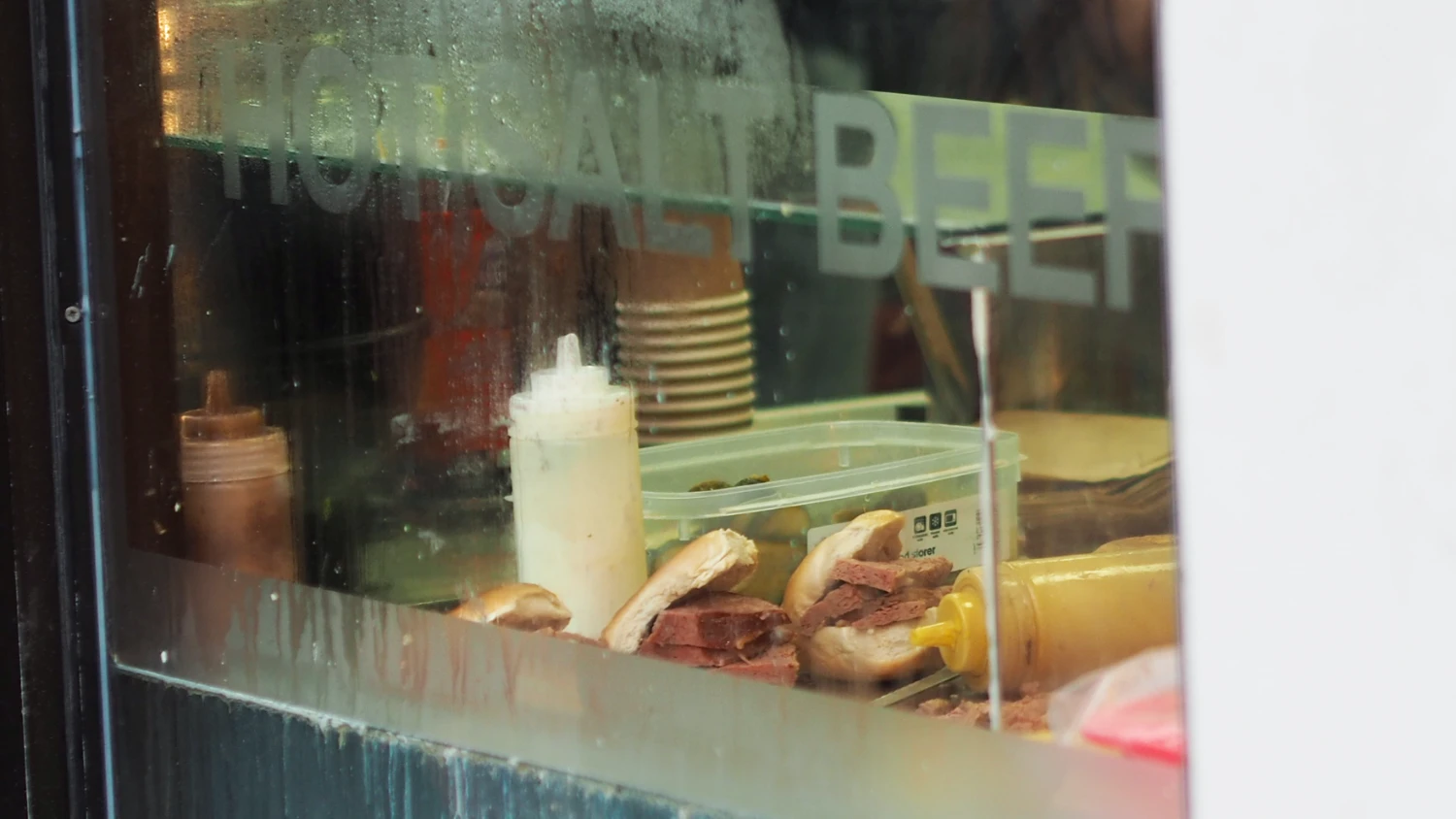
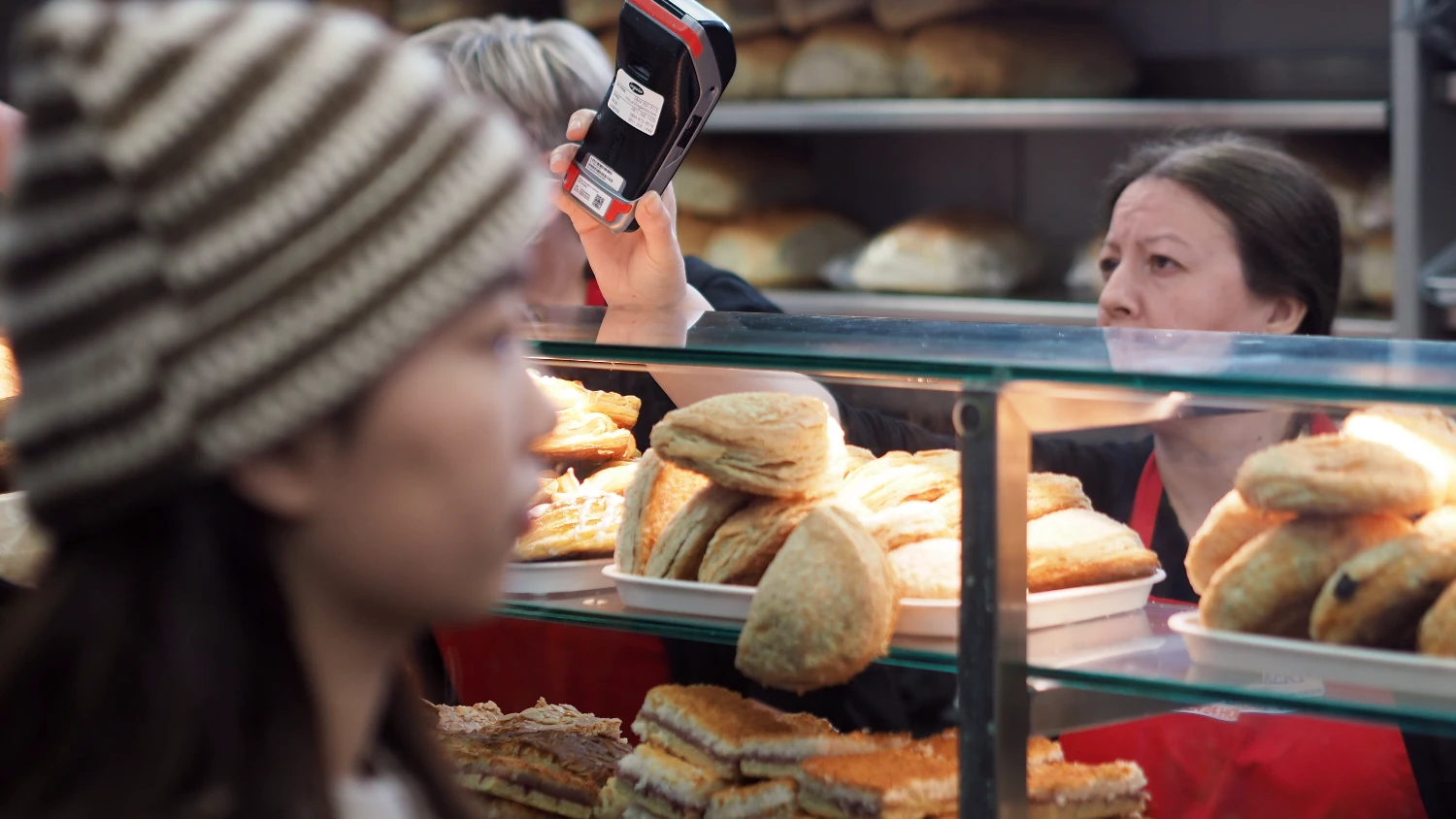

Their bagels bring people together; everyone I know has been there. The bad reviews on Yelp are usually from tourists from New York or people who have lived there. Beigel Bake makes the chewy polish-style beigels, not the soft bagels with the big hole you might know from New York.


Line up in an orderly queue, shout your order across the counter, pay, pick up your food and leave. This place is too busy to exchange fleeting niceties or discuss the weather, at least most of the day. Get them with salt beef and pickle, cream cheese and salmon, or Nutella if you must. I’ve been coming here for years and never left disappointed.

— Hackernews, the online community renowned for its connoisseurs of southern German cuisine, debates an article about German pretzels. It didn’t take long for someone to post a comment psychoanalysing European’s insecurities and character flaws because the author compared US American and European bread. Peak Hackernews.
— The Yard Sale Theory tries to understand why wealth is so unevenly distributed these days. Wealthier people have more leverage to place bets, on the stock or property markets, for example, so they’re more likely to win big and find it easier to cover their losses. The Pudding explains the theory in a series of visualised experiments.
I came across a rare scenario where the poor person wins all the money when they have an early winning streak allowing them to accumulate wealth.
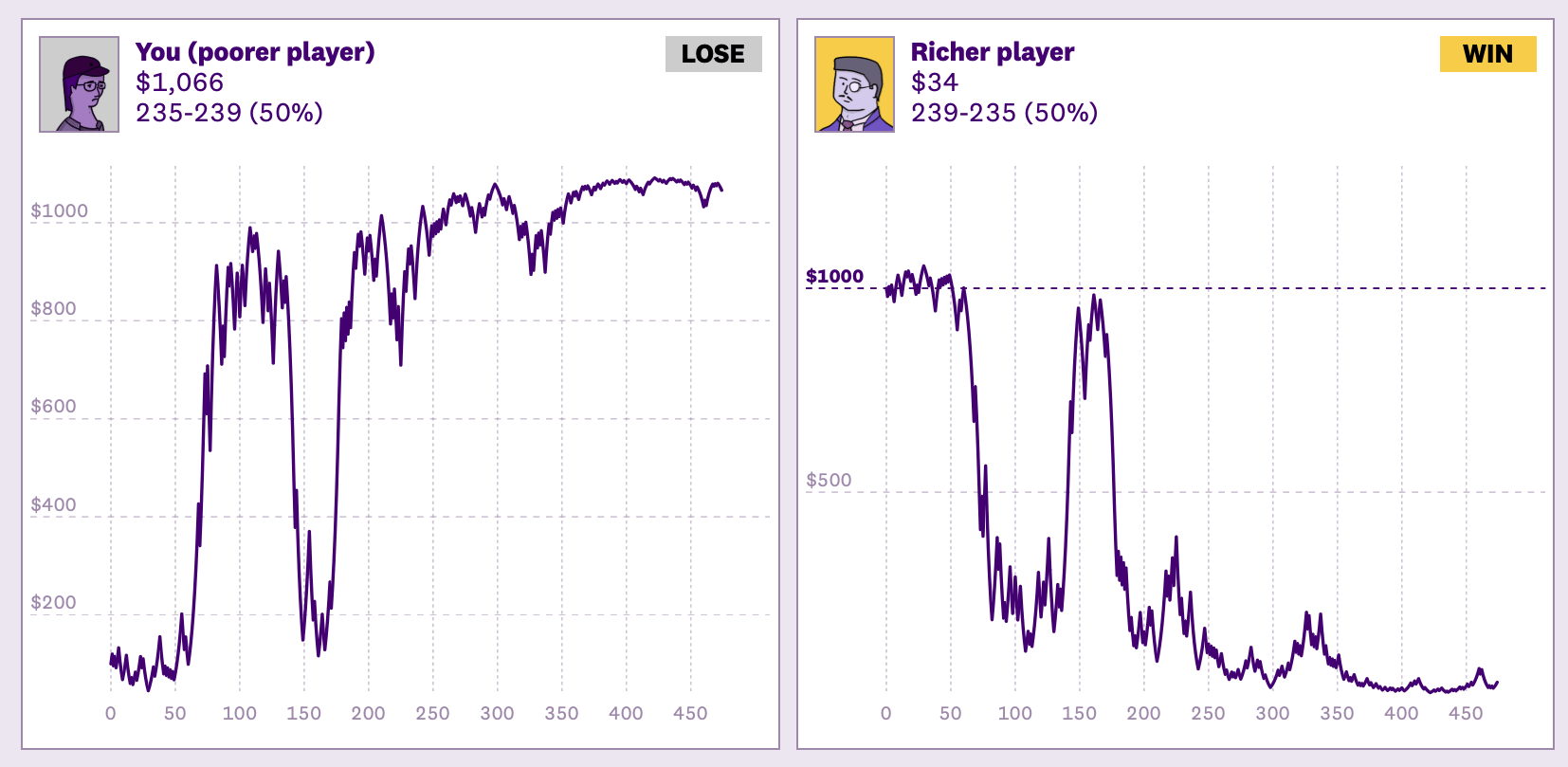
I ran the same experiment a couple more times, and, as expected, the richer always got richer.
Kid Koala – Jump & Shuffle
Hand-cut audio made with 1135 scratches. Hand-drawn video made with 1038 drawings.
— Here’s a reason why I can’t get myself to add any “smart” devices to my home:
The most intimate image we saw was the series of video stills featuring the young woman on the toilet, her face blocked in the lead image but unobscured in the grainy scroll of shots below. In another image, a boy who appears to be eight or nine years old, and whose face is clearly visible, is sprawled on his stomach across a hallway floor. A triangular flop of hair spills across his forehead as he stares, with apparent amusement, at the object recording him from just below eye level.
Vacuum cleaners, doorbells, personal assistants — all these devices collect personal, often sensitive information. It’s hard to comprehend how much data they collect, and in whose hands this data ends up.
Roomba says the images came from special development machines, and standard devices don’t possess the same video capabilities. What are they working on that they need to label machine-learning training data to identify TVs, fridges or ceiling lamps? A little drone that cleans the dust off your TV screen?
— The conditions couldn’t have been any better when we were approaching London last week: A window seat, clear skies, even snow.


You get the best view of the city from a plane approaching Heathrow. Unfortunately, pictures taken with a phone, while moving, and far away from the object, turn out poorly.
— The topologist’s world map is a map that is heavily distorted for compactness but with the borders between countries preserved. Is it a useful map? Not really. Does it look good? Yes, very.
— One of my gripes with the current hype around Mastodon is that the discussion around social-media alternatives focusses mostly on Mastodon, presumably because it’s that resembles Twitter the most.
But as Bastian Allgeier points out that Mastodon is just one part of a puzzle. Using IndieWeb protocols, other platforms, even websites, can exchange data with Mastodon and between each other.
There’s a lot of wisdom in being careful after all we’ve seen happening to Twitter in the past weeks. There’s even more than enough reason to be cynical about any future form of social media. Mastodon is being praised a lot right now and it will most definitely not be a magic healing potion for all our social problems.
But Mastodon is not a platform. Mastodon is just a tiny part of a concept many have been dreaming about and working on for years. Social media started on the wrong foot. The idea for the read/write web has always been different. Our digital identities weren’t supposed to end up in something like Twitter or Facebook or Instagram.
Decentralisation, Federation, The Indie Web: There were many groups silently working on solving the broken architecture of our digital social networks and communication channels – long, long before the “web 3” dudes tried to reframe it as their genius new idea.

— Block Protocol is an open standard for building block-based interfaces (the blocks you know from content-management systems). Its goal is to allow developers to create and share reusable content blocks that simplify adding semantically structured information to websites, like books or addresses.
There’s a reference implementation for Wordpress, and Joel Spolsky published a write up outlining the ideas behind Block Protocol.
— Manton Reece is the creator of Micro.blog, his book Indie Microblogging is three things:
IndieWeb Microblogging embodies the very values of the open web: Sharing ideas and knowledge for everyone to build upon and to build a better, Independent, open and more connected Web.
— IndieKit provides IndieWeb tooling to self-publish content and share on social media; and it integrates with static site generators.
— Who would have thought that teenagers dumping their smartphones would be an act of rebellion against their parents:
“My parents are so addicted. My mom got on Twitter, and I’ve seen it tear her apart. But I guess I also like it, because I get to feel a little superior to them.”
What do they do instead? They spend time outside, they read and do craft.
— Six video games from the USSR:
A few of you probably won’t believe it, but the USSR also had video games. They existed either in arcade form, or had to be played on do-it-yourself game consoles.
Yes, Tetris is on the list.
— On the current decentralisation movement — a short take I want quote entirely. I have similar feelings about the topic; much of the discussion is centred around technology to re-create existing platforms instead of thinking about whether we need these platforms at all.
— Your typical Baz Luhrmann film: Grandiose visuals but a little boring.
Elvis (2022). Director: Baz Luhrmann. Cast: Tom Hanks, Austin Butler.
— Two men are dropped on an island to work on a lighthouse, initially for four weeks. A storm hits, and they have to stay longer, much longer. Or do they? As one of them battles with the weather, loneliness and his counterpart, reality becomes increasingly distorted.
The Lighthouse is the kind of movie you watch fully engaged, beginning to end. You really want to like it because this isn’t your average Hollywood blockbuster. It’s shot in black and white at an odd aspect ratio. There’s no music score, only the distant, haunting sound of a fog horn. Willem Defoe’s and Robert Pattison’s acting is superb. But when the film ends, you walk away thinking, “what was all this about?”
The Lighthouse (2019). Director: Robert Eggers. Cast: Willem Defoe, Robert Pattison.

— SINGAPORE CHANGI – It’s 5 AM in Singapore. I’m sitting in an air-conditioned airport lounge, yet I can feel the humid, muggy heat outside. I’ll be boarding a plane to London in a few hours whereI lived for several years. I’m going home, even though I didn’t grow up there.
It might be the lack of sleep but, strangely, all I can think of is the food I want to eat to make the most of my two weeks in the big city:
For me, being “home” manifests mainly through food. It’s the same when I return to Germany, where, when I visit, many activities centre around consuming pork in various ways.
I’ll probably gain a few pounds in London, but that’s ok since I mostly live off smashed avo on toast in Australia.
— Of the New York Times list of football movies, I have only seen The Cup, which was great.
Certainly missing from this list is Zidane: A 21st Century Portrait, a documentary that focusses only on Zinedine Zidane during a league match in 2005. You only see Zidane, never any other players. Closeups of his face, how focussed he is; his feet, you see how he moves, how elegantly he handles the ball. Truly beautiful.
— In the 1960s, urban planners drew up plans to build an elevated ring road through inner London, potentially displacing a large population of poorer people. Luckily the plans were scrapped, and the road was never built. It’s hard to imagine today how the highway would have changed London.
Ring road or not, poorer residents were eventually priced out. The areas in the way of the road, including “Earl’s Court, Clapham Junction, Brixton, Blackheath, Hackney Wick, Dalston, Camden, and Kilburn,” are highly sought-after neighbourhoods to live in London today.
— Ooh, how did I miss this? Karate re-released three of their albums Unsolved, Some Boots and Pockets alongside the Cancel/Sing EP as a limited-edition vinyl bundle. It’s mostly sold out already, but if you’re quick, you can still snatch a copy.
Why yes, I did get myself an early Christmas present.
— Henn Tan is the name of the man who gave us the thumb drive. You know, that thing we used back in the day to get the master’s thesis to the printer, to share photos and music that was absolutely legally obtained, before we moved all our digital belongings to someone’s server.
— I stumbled across this Kid Koala mix while digging through old Solid Steel episodes. The 53 minutes embody everything I love about Kid Koala: The vast, eclectic but assorted record collection, technical skill, paired with an insatiable hunger for experimentation.
It’s beyond me how Kid Koala only has a relatively small following; this mix has amassed only 18,000 plays since it was released in 2003.
— This is the story of three friends from New York City, the story of the Beastie Boys—told by the Beastie Boys. Micheal Diamond and Adam Horowitz, live on stage at the Kings Theatre in Brooklyn, New York, are recalling significant events from their 30-year career. How they started as a punk rock band (everyone was in a punk rock band), how they got into rap (everyone got into rap in New York in the 1980s), how they met Rick Rubin and Russel Simmons (Rick Rubin had the equipment they needed for a gig). Moving to California, trying to leave behind “Fight For Your Right,” and finally becoming proper musicians.
As you’d expect, their story is hilarious and a little crazy. But Diamond and Horowitz are well into their fifties now; they have grown up. Between the stories of juvenile silliness and lousy decision-making, there’s also much introspection. Both take significant time to reflect on how they treated former band members before the Beastie Boys broke out and the sexist lyrics they wrote; that it was the late Adam Yauch who shaped the Beastie Boys into grown-up artists and humans.
— I did yet another redesign of the website over the weekend. It wasn’t necessary, but I had a couple of hours with nothing to do, and I didn’t like the previous iteration.
The new design’s narrow page layout, header image, borders, and background patterns are a nod to web design from 2005 when the internet was still fun. The colour scheme is inspired by the movie posters Saul Bass designed in the 1960s and 1970s.
On top of the new design, there are a couple of additions:
— Every Frame a Painting examines lenses, camera position, and editing used by the Coen Brothers to shoot dialogues in their movies.
I love content that explains the technical aspects of making art. (via kottke.org)
— You can add ActivityPub to a static website built with Jekyll and hosted on Netlify. Tom MacWright shows how.
— The iconic Blue Marble picture, taken by Apollo 17 astronauts on their way to the moon, is 50 years old now.
— Robin Sloan calls on us to make 2023 a year of experimentation and create new things that let us connect online, but outside of established platforms:
I am thinking specifically of experimentation around “ways of relating online”. I’ve used that phrase before, and I acknowledge it might be a bit obscure … but, for me, it captures the rich overlap of publishing and networking, media and conviviality. It’s this domain that was so decisively captured in the 2010s, and it’s this domain that is newly up for grabs.
It is 2003 again. Facebook, Twitter, and Instagram haven’t been invented yet … except, it’s also 2023, and they have, so you can learn from their rise and ruin.
— If Twitter continues to cull features from their website, we might end up with a calmer version of the website, one that doesn’t scream “here, engage with this too” from every corner. Just kidding, attention-grabbing features will continue to spoil the experience forever because attention is the only way for Twitter to make money.
But I want to read, not engage, so I created a custom stylesheet, which removes annoying and useless clutter from Twitter’s website. The opinionated list of cruft hidden by the style sheet includes:
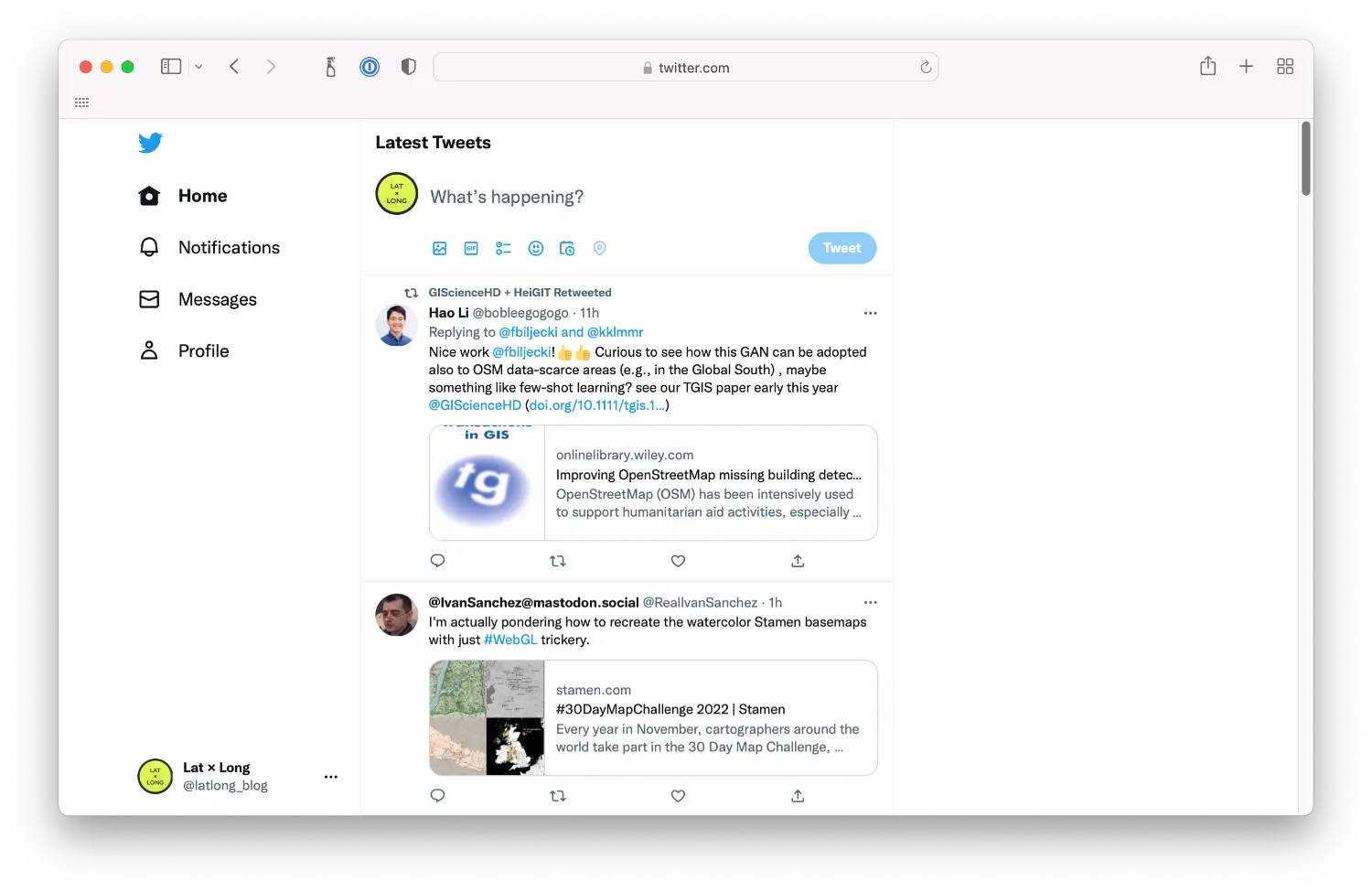
Get the stylesheet now and add it as a custom CSS in your favourite browser.
— Desktop blogging editor MarsEdit 5 is out, introducing micro-blogging, Markdown syntax highlighting and a new rich-text editor. Now, I need to implement AtomPub on the site so I can start using MarsEdit.
— The most popular social networks by monthly active users since 2004, animated.
I had never heard of Hi5 before, or Qzone, which had over 650 million active users in 2014. (via Waxy)
— Kalley Huang, New York Times:
“Twitter is in crisis and Meta needs its mojo back,” one Meta employee wrote in a post. “LET’S GO FOR THEIR BREAD AND BUTTER.”
Not sure how you feel about it, but wouldn’t it be a good idea if the people building Twitter alternatives today were not the same that built the dreadful social-media platforms that currently exist?
— The Tumblr community has invented a Scorsese movie called Goncharov. And Martin Scorsese is aware of it. The Internet is still weird.
— I love these black-and-white photos from London. The whole of aegir’s blog is a thing of beauty; each post has a different header graphic and colour scheme. (via ooh.directory newsletter)
— Football coverage in Germany is terrible. No matter what broadcasting network, they always seem to find men who have never played or even watched a game of football and hand them a microphone to enlighten viewers with their pathetic lack of understanding of the game and their questionable interpretation of the game’s rules. The “unnatural position of hands” to decide handball or not, that was German commentators who started it ten years ago. You are very welcome, world. It was so bad we sometimes turned off the TV’s sound and played radio commentary instead. And people welcomed alternative online streams that networks introduced, which didn’t have commentary at all.
I didn’t think you could do any worse, but as it turns out, you can.
— I listened to all tracks of the Guardian’s 20 best songs of 2022, and I’m reminded that pop music generally isn’t for me.
Steve Lacy sounds like a poor man’s Ben Folds. Listening to Beyonce reminds me of Madonna’s Music; desperately trying to sound young. And the rest is just the dullest House for the Ibiza-beach-club generation. Three artists show up more than once on the list—it looks like it wasn’t a good year for new music.
I enjoyed the new Arctic Monkeys record though; they sound different than their earlier recordings; I like it when bands evolve.
— In The Blog Cycle (from 2005), Anil Dash traces the typical discussions within blogging communities as they evolve from initial formation to maturity. I wonder if we’ll see this pattern again if the current interest in weblogs continues.
— Google Maps is no longer served from the subdomain maps.google.com but from a path on Google’s main domain (google.com/maps). If you’re allowing Google Maps to use your location, Google can now use it on all sites under google.com.
— Nobody knew what would happen after most of Twitter’s workforce was laid off or resigned. Still, Gruber is right: The doomsday scenarios that were predicted haven’t happened yet.
— Shaun Ganley recorded the approach to New York’s LaGuardia Airport, arguably the best view over the City. You get to experience the size of New York, how the architecture changes, and how the different parts connect. It’s like a vast, real-life map.
Getting a view of my destination while approaching the airport is one of my favourite things about flying. Approaching London Heathrow, you get an excellent view of the city on most days; if you have a window seat on the right-hand side of the plane and if the weather plays its part.
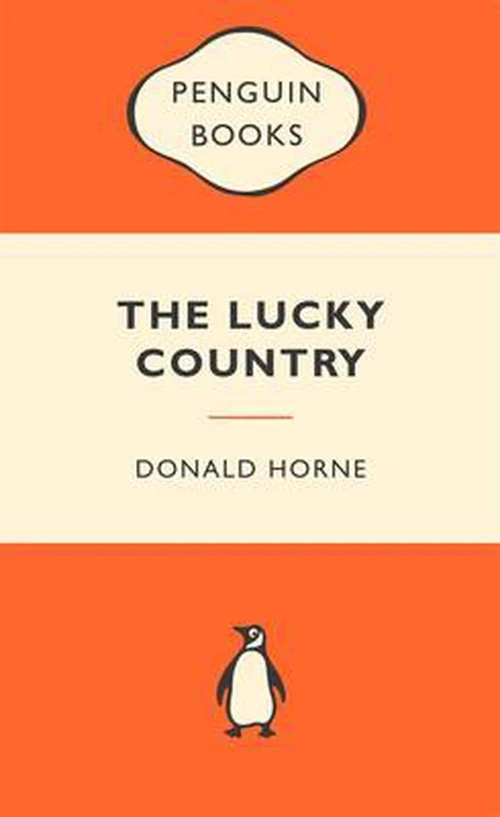
— David Horne must have really hated Australia and Australians. The intellectuals: Not enough bold ideas. The politicians: Mediocre kleptocrats. Business people: Just stealing products elsewhere. The rest: Only interested in drinking, sports, and the beach.
Ironically he never presents any evidence for his claims. He doesn’t cite any numbers or research. It’s just a collection of ramblings by someone who didn’t seem to fit in because they’re too preoccupied with thinking they’re smarter than everyone else. Or he’s just been sarcastic, and I don’t get it.
I’m giving this book two stars because, at least, it’s a great source of insulting zingers that I can use whenever the situation requires it.
— A nice bit of internet nostalgia:
a collection of more than 700 88x31 web buttons from the 1990’s and 2000’s, including the famous “Netscape NOW” and “Internet Explorer” buttons
I’ll definitely put one of those on the site soon.
— I posed a question the other day when linking to John Scalzi’s How to Weave the Artisan Web:
How realistic is it, though, that the vast crowd that built a following on social media using its straightforward publication and amplification methods; that these people will start to develop and maintain their own websites?
Right now, we’re seeing an increased interest in the independent Web: People flocking to Mastodon, folks talking about RSS, and creating blog directories. But the movement is mainly driven by tech-savvy people. People who know how to code a site, host it, and already have a network outside of big-tech social media.
But artists, musicians, writers, your fourteen-year-old niece and their friends, many of them don’t know how to code or host a website. We have all this amazing technology, decentralised platforms to build social networks, and IndieWeb protocols that enable websites to talk to each other; but that technology still needs to be wired up to form a network, and that requires technical skill.
Unless you find someone to do it for you. And who’s more likely to build a stable and user-friendly platform using IndieWeb technology while there’s momentum? Is it the nerd coding away at night after a long day building software to make your pizza arrive earlier or the VC-funded startup that puts money and a team behind the idea?
Remember when Substack started, and everyone lauded that email is based on open standards that no company can own. But Substack still owns the editor, they own the database that hosts your content, and they sure try everything to make people sign up for their service to read any of your content. And if Substack decides to put their service behind a paywall or close it down altogether, your work is gone unless they provide a way to export all your data. Nobody owns HTTP either, yet we’ve seen previously how open platforms are giving in to the pressure from financiers and retract further and further from the open Web.
And as much as I’d love and genuinely hope to see an independent web materialise and algorithm-driven content distribution disappear entirely, I fear the moment will be hijacked by big money. Because it is so difficult to build.
That’s not to say we shouldn’t try. I really do hope that ethical companies like Micro.blog and Automattic continue to work towards an open Web and carve out a niche for people who care.
— Claus-Henning Schulke hands world-record Marathon athlete Eliud Kipchoge drink bottles during races. He celebrates every successful hand-over to Kipchoge so excessively that people started noticing and nicknamed him “Bottle Claus.”
FloTrack did a behind-the-scenes look with Schulke during the 2022 Marathon in Berlin.
You can see Schulke’s energy, excitement and joy; they are infectious.
— Great news, Kottke is back. I’m glad (hope) he and his tree are doing better.
— Netflix is streaming That ’90s Show, a sequel to That ’70s show, from January 2023. The Formans are grandparents now and their granddaughter is visiting. I’m not sure the sequel was necessary, but ok, it might be good actually.